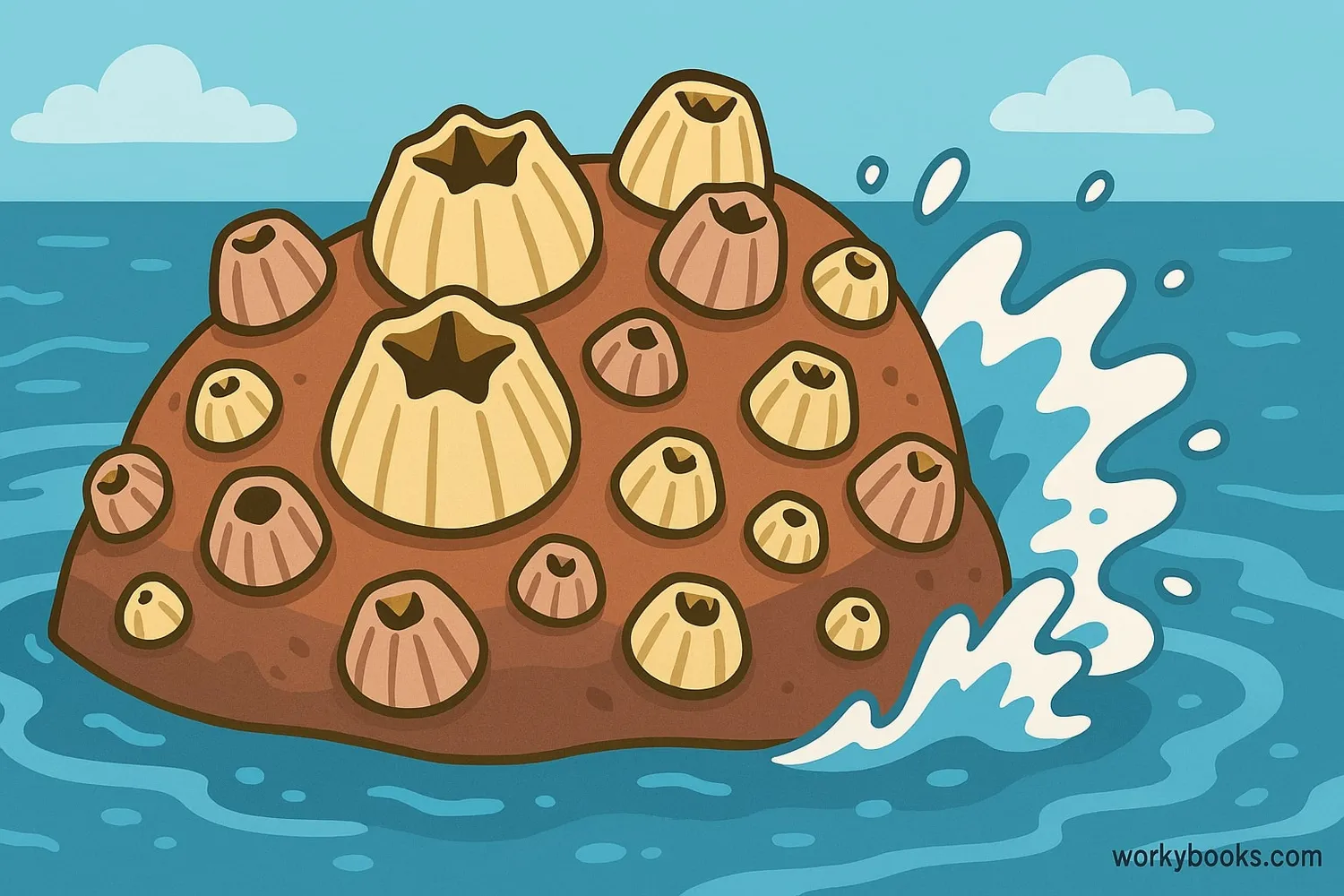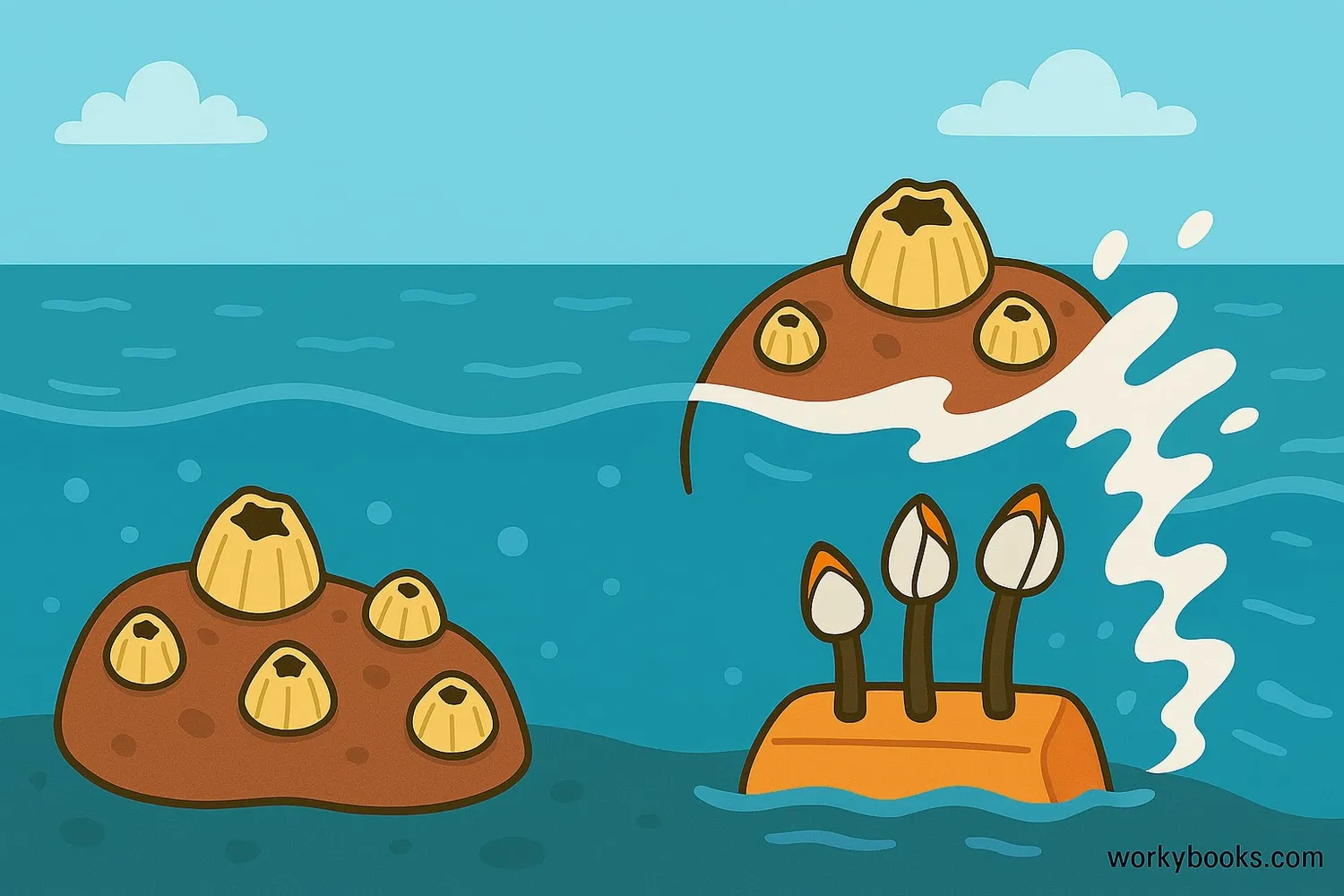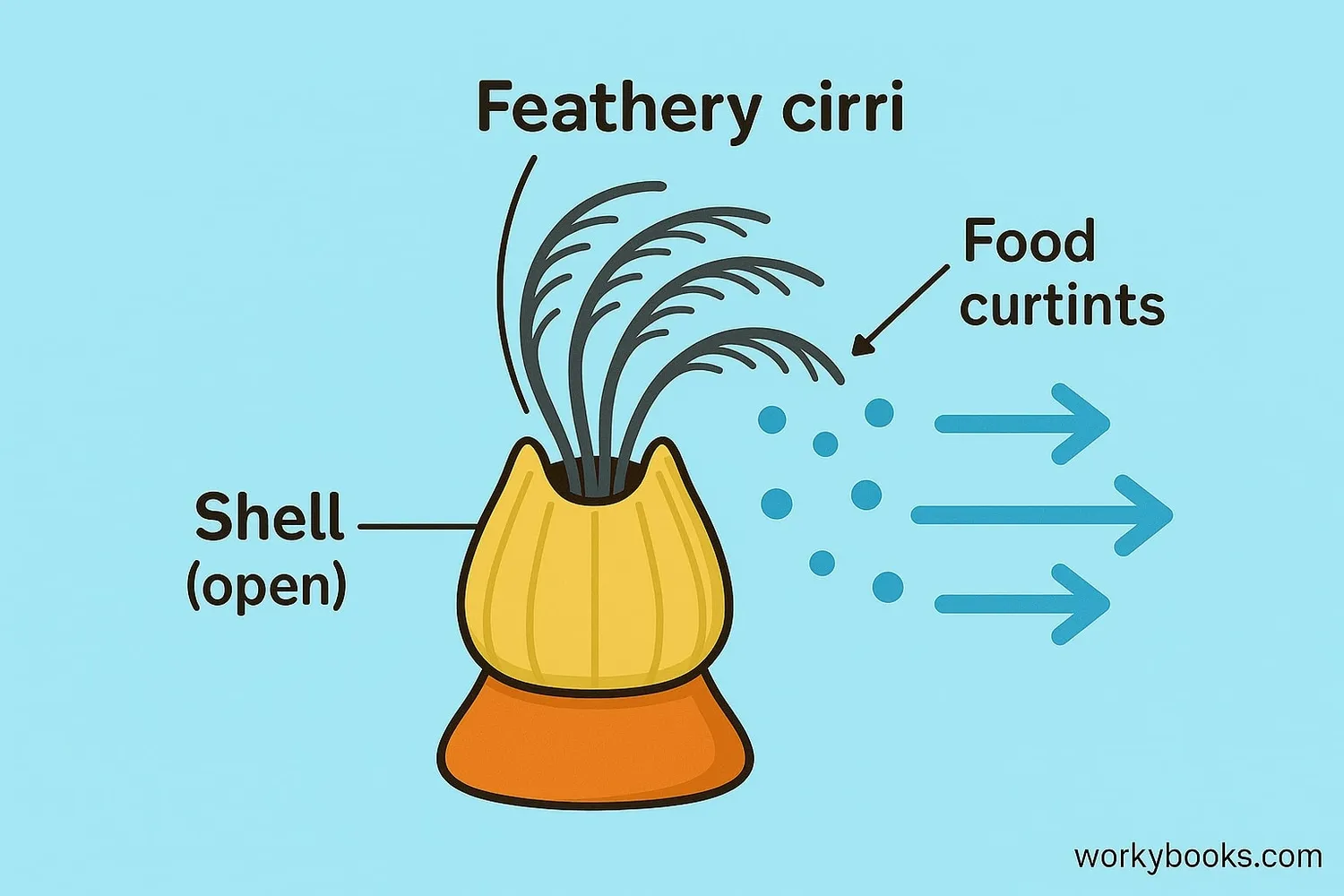Barnacles - Definition, Examples, Quiz, FAQ, Trivia
Discover how these amazing crustaceans live, feed, and build their shell homes
What Are Barnacles?

Barnacles are small marine crustaceans related to crabs, lobsters, and shrimp. Unlike their mobile relatives, barnacles are sessile organisms, which means they attach themselves to surfaces and stay in one place for their entire adult lives.
These amazing creatures build hard calcium carbonate shells around their bodies for protection. When underwater, they extend feathery legs called cirri to sweep food particles from the water. This method of eating is called filter feeding.
Did You Know?
Barnacles might look like mollusks (like clams or mussels), but they're actually crustaceans with jointed legs and a hard exoskeleton!
Types of Barnacles

There are over 1,400 species of barnacles, but they generally fall into two main categories:
Acorn Barnacles
These are the most common type. They have a volcano-shaped shell that attaches directly to surfaces like rocks, piers, and ship hulls.
Goose Barnacles
These barnacles have a long, flexible stalk that attaches to floating objects. They're often found on driftwood, buoys, and even whales!
Both types belong to the scientific group Cirripedia. While they look different, they share the same basic body plan and feeding method.
Habitat & Lifestyle

Barnacles thrive in the intertidal zone - the area between high and low tide. This challenging environment means they're regularly exposed to air when the tide goes out and submerged when the tide comes in.
They're found in rock pools and tide pools around the world, from tropical waters to colder regions. Barnacles attach themselves to various surfaces including:
Rocks & Cliffs
Their most common natural habitat where they form dense colonies
Ship Hulls
As fouling organisms, they can slow down ships and increase fuel costs
Marine Animals
Some attach to whales, turtles, and crabs for a mobile home
When the tide goes out, barnacles close their shells tightly to trap seawater inside, keeping themselves moist until the water returns.
How Barnacles Feed

Barnacles are filter feeders. When submerged, they open their shell plates and extend feathery appendages called cirri that sweep through the water to capture tiny food particles.
Their cirri work like a miniature net, catching:
Plankton
Microscopic plants and animals drifting in ocean currents
Detritus
Tiny bits of decaying organic matter
Microorganisms
Bacteria and other tiny life forms
The cirri then retract into the shell, bringing the captured food to the barnacle's mouth. This efficient feeding method allows barnacles to thrive in nutrient-rich waters without ever leaving their homes.
Feeding Adaptation
Barnacles can sense when predators are nearby and quickly retract their feeding appendages to avoid being eaten!
Barnacle Quiz
Test your knowledge about barnacles with this quiz. Answer all 5 questions to see how much you've learned.
Frequently Asked Questions
Here are answers to some common questions about barnacles:
Fascinating Barnacle Facts
Discover some amazing facts about barnacles!
Natural Super Glue
Barnacles produce one of the strongest natural adhesives known to science. Their glue works even underwater and scientists are studying it to create better medical adhesives for surgery.
Size Variety
Barnacles range from tiny species less than 1 cm across to giant barnacles that can grow up to 15 cm (6 inches) long! The largest species live in deep ocean waters.
Long Lifespans
Some barnacle species can live for 10-15 years! They grow by adding new material to the base of their shell, creating growth rings similar to trees that scientists can count to determine age.
Historical Nuisance
For centuries, barnacles have been a problem for shipping. Before modern antifouling paints, ships had to be regularly careened (tilted on their side) so sailors could scrape barnacles off the hulls.


